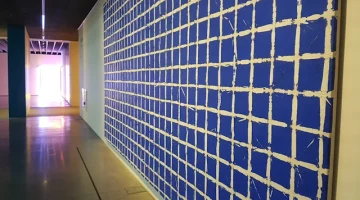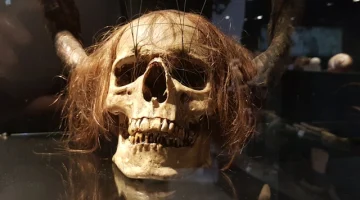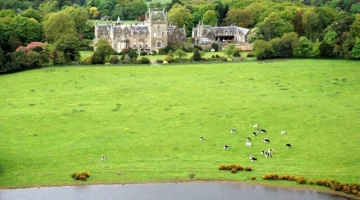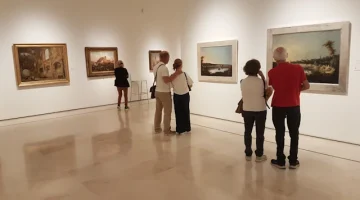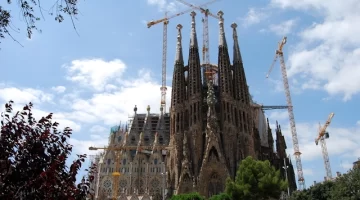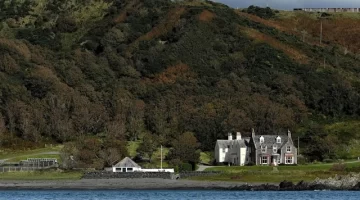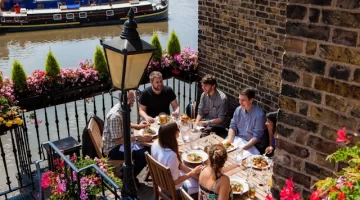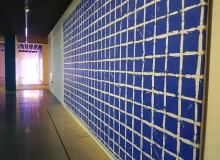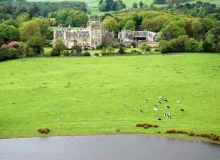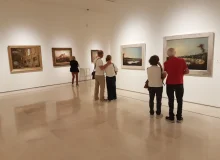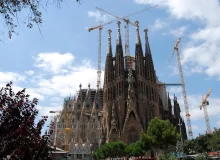The Carmen Thyssen Museum in Malaga
The Travel Pages visits the Carmen Thyssen Museum in Malaga, devoted to 19th-century Spanish art and one of the top museums in the city.

We didn’t think it would take long to visit the Carmen Thyssen Museum in Malaga. An offshoot of the main collection in Madrid, this museum is devoted to 19th-century Spanish art. We thought we might spend half an hour browsing dusty old landscapes and dull portraits of Spanish politicians, but all the guidebooks and websites said it was one of the highlights of Malaga, so in we went. Two hours later, we were still there.

History of Malaga’s Carmen Thyssen Museum
The museum is named after Baroness Carmen Thyssen-Bornemisza (Carmen Cervera), the widow of Baron Hans Heinrich Thyssen-Bornemisza. While the main Thyssen-Bornemisza collection is famously displayed in Madrid, the Málaga museum showcases a major portion of Carmen Thyssen’s personal collection, which she began assembling in the 1980s. This private collection focuses primarily on Spanish art, particularly works from the 19th and early 20th centuries, with a special emphasis on Andalusian artists and themes.

Temporary Exhibition
The initiative to establish a dedicated museum for this collection in Málaga began in the late 1990s. The chosen location was the Palacio de Villalón, a historic building constructed between the late 15th and early 16th centuries. Extensive renovations and adaptations, which began in 2007 and were funded by the Málaga City Council, saw the Renaissance palace meticulously restored and integrated with newly constructed exhibition spaces.
The museum officially opened its doors to the public on March 24, 2011, quickly becoming an essential stop on the city’s burgeoning museum circuit, alongside the Picasso Museum and the Centre Pompidou Málaga.

The Carmen Thyssen Museum in Malaga
The building is indeed splendid, with an open courtyard, off which is a bright and light-filled café, plus an excellent gift shop which is huge by comparison to most museum gift shops.
The Core Collection

The permanent collection is housed on the 1st and 2nd floors of the mansion, with the 3rd floor given over to temporary exhibitions. On our visit this was a fascinating exhibition of modern art.
The main collection is a long way from being made up of dusty old landscapes and dull portraits of Spanish politicians. The landscapes (and some seascapes) were mesmerising in their use of colour, while the portraits were far from dull, and few were of politicians. They ran the range from nobleman to fisherman, all portrayed with equal detail and dignity.

By Guillermo Gomez Gil
Most fascinating of all, though, were the street scenes, the portrayals of everyday life. Scenes of courtship. Street vendors. Bull fights. Feast days. There were some vivid depictions of masked balls, with the higher echelons of society, too.
Highlights of the Collections

The permanent collection comprises over 230 works, offering a thorough and engaging chronological and thematic journey through Spanish art of the 19th and early 20th centuries. It is particularly renowned for its focus on Andalusian painting, making it the most complete collection of its kind in Spain. The exhibition is generally structured into four main chronological and thematic sections.
-
Old Masters
This section, often housed in the historical chapel of the palace, acts as a prelude to the main collection. It includes a small but high-quality selection of Spanish and European religious painting and sculpture spanning the 13th to the 17th centuries.
The undisputed masterpiece of this section is Saint Marina, a striking Baroque canvas by the Spanish Golden Age master Francisco de Zurbarán (c. 1640–1650).
-
Romantic Landscape and Costumbrismo
Focusing on the first half of the 19th century, this section highlights two main themes: the Romantic fascination with sublime nature and the rise of Costumbrismo—paintings depicting local customs, traditions, and everyday life.
Stimulated by Romantic foreign travelers, artists like Alfred Dehodencq and Manuel Barrón y Carrillo often portrayed an exotic, idealized image of Spain, with Andalusia—featuring flamenco, bullfighting, and picturesque scenes—as its quintessential subject. Works like A Confraternity in Procession along Calle Génova, Seville by Alfred Dehodencq capture the vibrancy of Andalusian life.

By Jose Navarro Llorens
-
Préciosité and Naturalism
The second half of the century saw Spanish painting absorb new European styles, moving towards greater technical freedom, more vibrant colors, and spontaneous brushstrokes. Préciosité refers to a highly detailed, colorful, and often small-format style favored by the rising bourgeoisie, exemplified by artists like Marià Fortuny and Raimundo de Madrazo.
Concurrently, Naturalism brought a more objective, en plein air approach to landscape painting, moving away from Romantic idealization to depict actual nature with greater realism, as seen in works by Martín Rico Ortega.

-
Turn-of-the-Century Art (Fin-de-Siècle)
This final section explores the definitive step towards modern Spanish painting from the late 19th and early 20th centuries. Artists began to look openly at international trends, experimenting with subject matter and technique, laying the groundwork for the avant-garde.
This period is represented by influential figures such as Joaquín Sorolla, known for his mastery of light in Mediterranean scenes, Ignacio Zuloaga, and the highly enigmatic and symbolic work of Julio Romero de Torres, whose painting La Buenaventura (The Good Fortune) is a major highlight. Ramón Casas also features as a representative of the new radicalism of the time.

By Enrique Martinez Cubells
And so it was that after 2-3 hours we left the Carmen Thyssen Museum in Malaga, having looked at every painting in the place, some of them more than once and many of them studied in great detail. For us, it was one of the unexpected highlights of Malaga.

Temporary Exhibition
Visiting the Carmen Thyssen Museum
Address: Plaza Carmen Thyssen, Calle Compañía, 29008 Málaga
Phone: +34 952 21 75 11
Website: carmenthyssenmalaga.org




